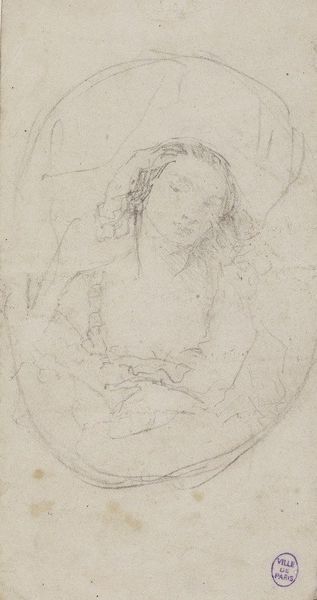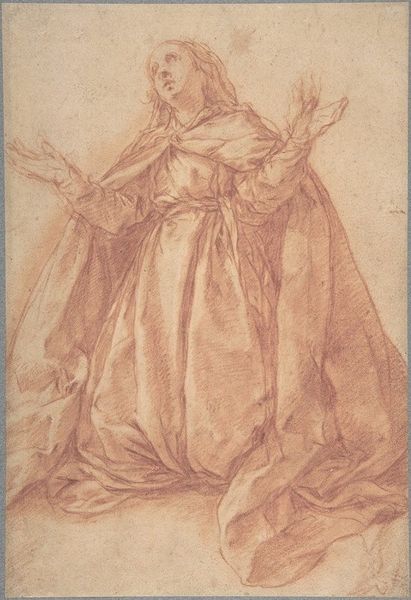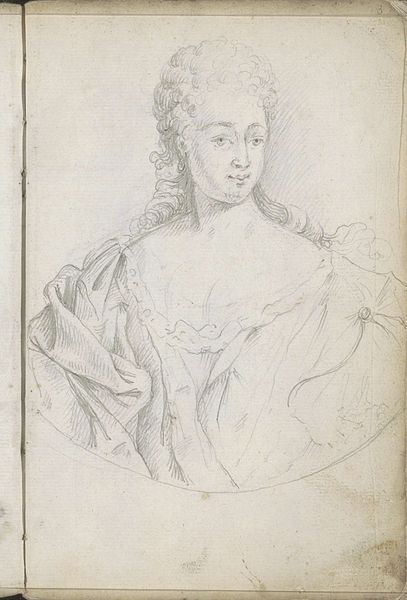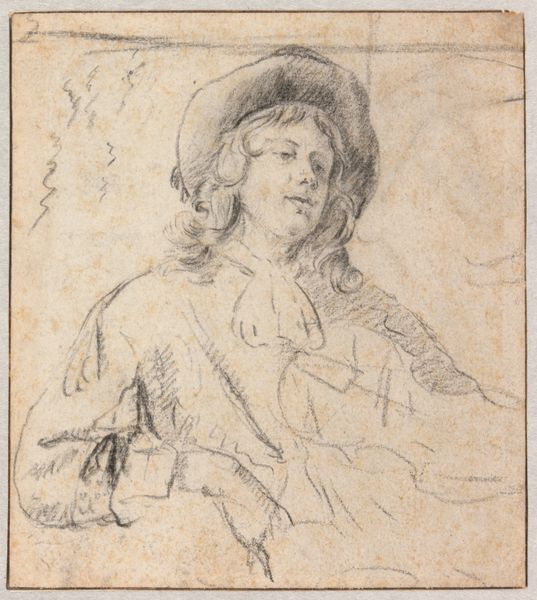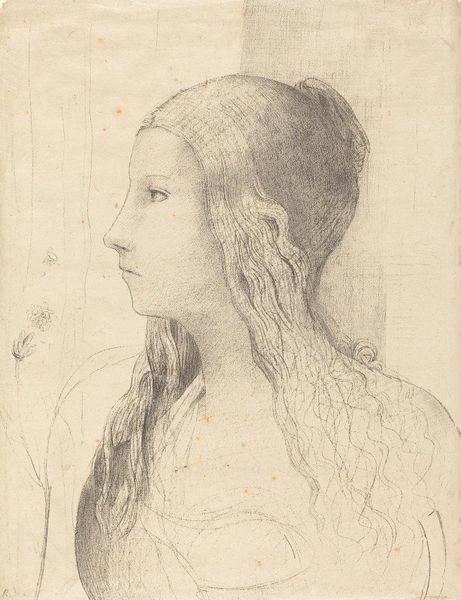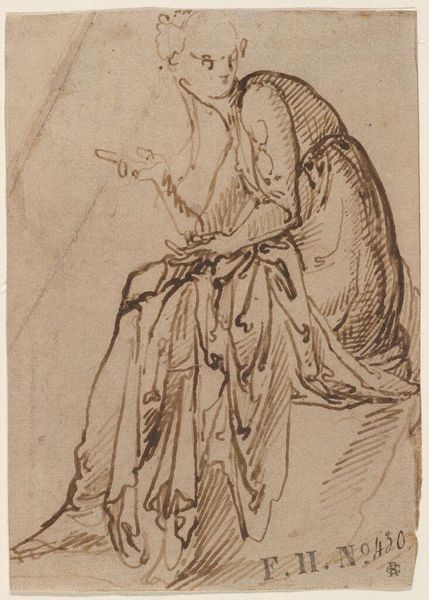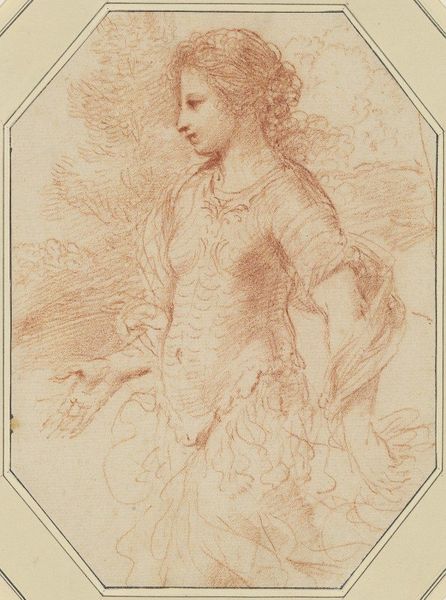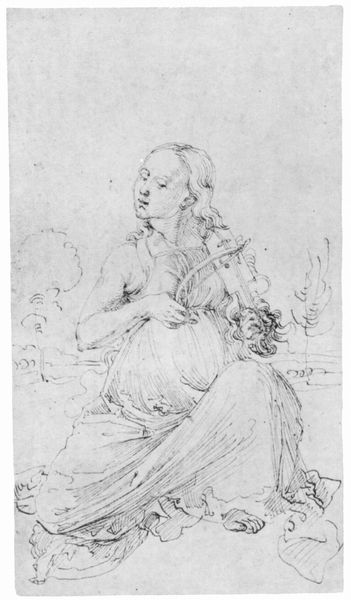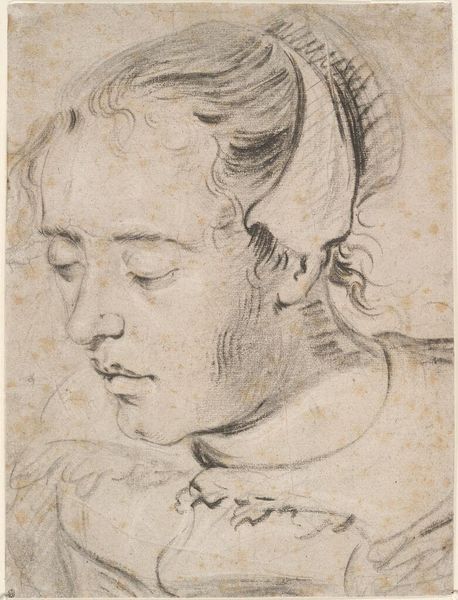
Dimensions: support: 121 x 67 mm
Copyright: CC-BY-NC-ND 4.0 DEED, Photo: Tate
Curator: Here we have James Tissot's "Study after Reynolds’ Portrait of Mrs Williams Hope," housed in the Tate Collections. Editor: It strikes me as incredibly delicate, almost ghostly. The light strokes of the pencil give it a fleeting, ephemeral quality. Curator: Absolutely. Tissot, working in the 19th century, was clearly captivated by the earlier portraiture of Reynolds. You can see the echoes of the "Grand Manner" in the sitter's pose. Editor: Yet, what does it mean to copy another artist's work? Is it homage, or something more subversive given the male gaze inherent in both artists? Curator: Perhaps it's Tissot engaging with the visual language of his predecessors, reinterpreting symbols of femininity and status through his own lens. Editor: Still, I wonder if this "study" can teach us about the power dynamics inherent in art history itself. Curator: An important point. It reveals so much when looking at who is remembered, and how. Editor: Yes, I appreciate how this drawing opens a window into those ongoing conversations.
